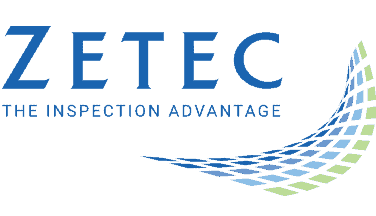Are Oil and Gas Visual Inspections Enough?

With so many small anomalies that can hamper asset performance, conventional visual inspections may not be sufficient. This is especially true in the hydrocarbon industry, where detailed oil and gas visual inspections often depend on the use of advanced nondestructive testing (NDT) techniques. To achieve a robust inspection, consider ultrasonic testing (UT) and eddy current testing (ECT).
Both methods can cover more testing ground in less time and detect more flaws than other NDT options. As such, ECT and UT are the leading techniques for oil and gas companies.
Ultrasonic Testing for the Oil and Gas Industry
With ultrasonic testing, oil and gas analysts have valuable options including: UT scanning with phased array ultrasonic testing (PAUT). An ultrasonic scanner is appropriate for curved structures like oil pipelines. Pipe curvatures can make proper alignment a hassle, resulting in skewed testing data. However, a PaintBrush scanner can tailor to the shape of pipelines, or many other curved assets.
This type of scanner can assess corrosion, in addition to other aberrations like wall-thinning or cracking. It comes with two encoded wheels that track the scanning position in real-time. It’s a step above conventional X-Y mapping systems that paint a limited scope of a testing area, especially on curved surfaces.
Other features that can enhance scanning accuracy include:
- Magnetic wheels that attach to metal surfaces
- Wheels dedicated to composites for non-metallic surfaces
- Advanced software that fosters high-resolution mapping of corrosive anomalies
In addition, PAUT provides diverse beaming angles and beam-customization. PAUT equipment with diverse angles can spot underlying flaws that often remain undetected under fixed beam angles. The array feature also comes with additional perks for tougher welds.
For instance, austenitic welds can distort beaming angles due to the high grain reflections within the material. This is also a common problem in stainless steel welds. Choosing not to utilize a thorough PAUT solution may result in a hidden deviation crippling operations without warning. Analysts may come across the following quandaries:
- Localized variations
- High beam attenuation
- Higher noise levels
The solution to austenitic welds in oil and gas facilities is a 2D matrix array. Using a low frequency (1.5 MHz to 3.5 MHz), a technician can counter propagation barriers. Analysts can also achieve a better signal-to-noise ratio (SNR) and a higher sensitivity rate.
It can be advantageous for oil and gas visual inspection technicians to find a device that is portable and durable.
Eddy Current Solutions for the Oil and Gas Industry
ECT solutions come with the same testing qualities as PAUT, but ECT is used for thin and conductive assets, whereas ultrasonic is more suited for thicker and coarser welds.
The most notable advantage of ECT over other techniques is that the probes don’t have to be in direct contact with a surface, there’s no surface preparation or chemicals required. A properly equipped eddy current instrument and probe can measure thickness variations within non-conductive surfaces like paint.
In addition to thickness variations, ECT can detect delaminations, voids, surface and subsurface cracks. Powerful ECT equipment with high SNR can pinpoint the slightest material losses within oil and gas infrastructures, allowing maintenance crews to get ahead of the curve and address issues faster.
With that, impeccable SNRs are only half the battle, as technicians must also have ECT equipment that’s versatile enough to access hard-to-reach areas. Oil and gas assets often contain nooks and crannies that are difficult to reach. But the battery-operated capacity of ECT devices can give users the freedom to reach precarious destinations.
If users must achieve a faster, easy-to-use detailed inspection, ECT also offers the array option known as Eddy Current Array (ECA). The most advanced ECA options provide custom tailoring for diverse welding shapes, detailed inspection records, easy-to-use interface, and the ability to quickly inspect large areas. Take note of the following ECA features:
- Probes with multi-coil sets that can be changed out in less than a minute
- A detachable encoder on a probe that can pinpoint flaw locations for added accuracy and confidence
- The inspection of smaller deviations on smooth surfaces
The interchangeable coil sets are fit for different surfaces and contours, such as pipes, tanks, and pressure vessels. Above all, ECA fosters a quicker, more comprehensive rendition of abnormalities compared to conventional ECT.
Why Oil and Gas Visual Inspections Aren’t Enough
Oil and gas visual inspections aren’t enough to highlight minute flaws, which may leave dangerous anomalies undetected for longer periods. To combat this, an oil and gas inspection must involve thorough NDT procedures, as they can save time and money and spot deviations earlier.
UT and ECT are the two most advanced NDT methods that can expose more flaws in a single testing campaign. With ECT and UT, analysts can achieve flexible aligning procedures and diverse probing strategies that conform to unconventional objects. As a result, technicians can inspect items faster and capture more flaws.
Zetec is a major provider of UT and ECT equipment for the oil and gas industry. Contact us today to get a tailored inspection plan and further guidance on testing strategies.
